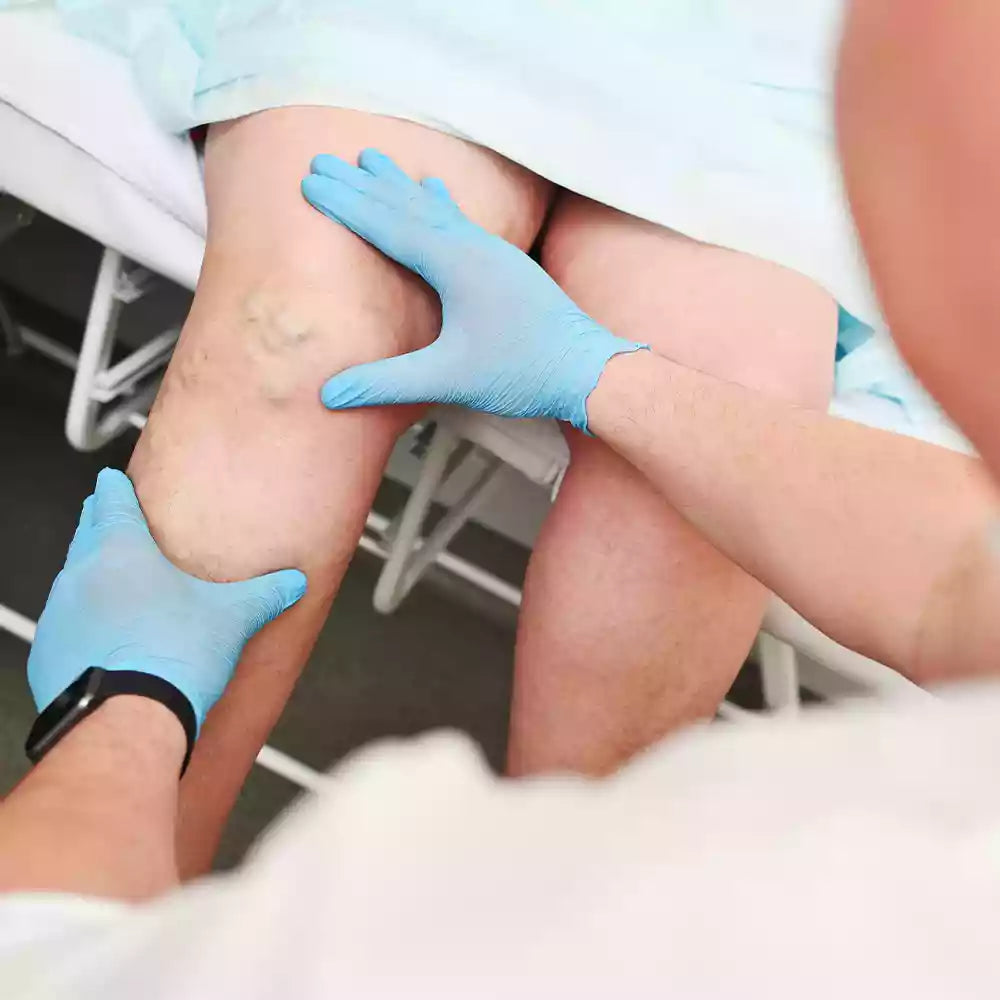It's not uncommon to feel anxious and worried about varicose veins due to the prevalence of myths and misconceptions surrounding them. To separate fact from fiction, it's essential to have a clear understanding of what's true and what's false about this condition.
Myth #1: Surgery is the Only Solution for Varicose Veins
Initially, surgery was the sole option for treating varicose veins. However, there are now various alternative treatments available, including sclerotherapy, Endovenous Laser Treatment (EVLT), Radiofrequency Ablation (RFA), and Ambulatory Phlebectomy.
Moreover, graduated compression therapy is another effective non-invasive treatment option for varicose veins. This involves wearing medical compression stockings that provide gradual compression to enhance blood flow, decrease swelling, and lower the risk of blood clots. By doing so, it can alleviate pain and discomfort associated with varicose veins while also preventing their development.
These medical compression stockings are available in compression class 1 which provides compression of 18 - 21 mmHg that usually helps in mild cases of varicose veins, compression class 2 which provides 23 - 32 mmHg compression level which is recommended in treating moderate cases of varicose veins, and compression class 3 which provides a higher compression level of 34-46 mmHg to your legs that helps in the most serious cases of leg circulation conditions.
We recommend that you consult a doctor to guide you in choosing which medical compression stocking will be best for your condition.
Myth 2: Varicose Veins Are Only Superficial
Varicose veins are not something only visible on the surface as they can cause pain, discomfort, and swelling, they can also lead to serious problems like skin ulcers, blood clots, and deep vein thrombosis which is why you need to be careful and not take varicose veins for granted when you see them on your skin.
Myth 3: Varicose Veins Just Affect the Elderly
There is a common misconception that varicose veins only affect the elderly population, but this is far from the truth. While age can be a contributing factor, varicose veins can develop at any age and affect people of all genders, ethnicities, and lifestyles. In fact, varicose veins are prevalent among young adults and even teenagers. Factors such as genetics, obesity, pregnancy, and prolonged standing or sitting can increase the risk of developing varicose veins at an earlier age.
Therefore, it's important to recognize that varicose veins can affect anyone and seek medical attention if any symptoms or concerns arise, regardless of age. By debunking this myth, we can promote better understanding and awareness of this condition, leading to earlier diagnosis and treatment
Myth 4: Varicose Veins Are Always Visible
The human eyes may not be able to see all varicose veins. Some may not be visible to the eyes and still be present deep inside the tissue. Even though they may not be visible, they can still cause pain and discomfort for you for which you can get treatment.
Myth 5: Varicose Veins Can Occur only in the Legs
While varicose veins are commonly associated with the legs, they can develop in other parts of the body such as the arms, hands, and face. Although these veins may be smaller and less noticeable than their leg counterparts, they can still cause significant discomfort and pain. It's essential not to overlook the appearance of varicose veins in any part of the body and to seek medical attention if you notice any symptoms. By recognizing that varicose veins can occur in different areas of the body, we can take appropriate action to manage this condition and prevent it from worsening.
Myth 6: Varicose Veins are always painful
While some varicose veins may not cause pain, it's still essential to address them promptly to prevent the development of more severe issues. Thus, it's crucial to be mindful of any visible changes in your veins and seek medical advice on how to proceed.
Myth 7: Exercise makes varicose veins worse
Exercise doesn’t worsen varicose veins. In fact, exercising helps to improve blood circulation and reduce the chances of developing varicose veins. Walking, cycling, and swimming, which are low-intensity exercises, can be useful in this condition as they help improve muscle tone and reduce the pressure on the veins. You also need to be careful about the position you keep your legs in while sitting.
It's crucial to be aware of and dispel the common myths and misconceptions surrounding varicose veins. By spreading this knowledge to others, we can promote a better understanding of this condition and encourage individuals to seek medical advice when experiencing varicose vein symptoms or concerns.
Seeking medical attention can help identify the best treatment options and prevent varicose veins from interfering with our overall health and well-being. Therefore, it's essential to prioritize varicose vein management and take appropriate measures to ensure optimal health.


